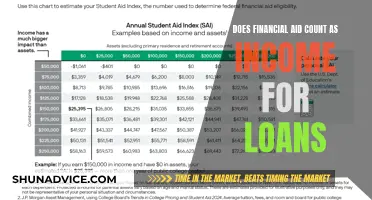
An assumable mortgage allows a new borrower to take over an existing loan at its current interest rate and terms. This can be done in two ways: a simple assumption, which is a private arrangement that does not release the original borrower from liability, or a novation, which involves the lender agreeing to release the original borrower from liability and creating a new obligation with the same terms and interest rate as the old loan. While conventional loans are typically not assumable due to the presence of a due-on-sale clause, government-backed loans, such as FHA, VA, and USDA loans, generally allow for assumptions. Fannie Mae, a mortgage agency that sets rules for conventional loans, offers an exception for adjustable-rate mortgages (ARMs) as long as the borrower gives up the option to convert the loan to a fixed-rate mortgage.
| Characteristics | Values |
|---|---|
| Does Fannie Mae allow loan assumptions? | Yes, but only for adjustable-rate mortgages (ARMs) and non-qualifying assumable mortgages that existed before December 14, 1989. |
| What is an assumable mortgage? | It lets a new borrower take over an existing loan at its current interest rate and terms. |
| What are the types of assumable mortgages? | Simple assumption and novation. |
| What is a simple assumption? | It is a private arrangement where the buyer takes over mortgage payments without the lender's approval. The original borrower retains liability for the mortgage. |
| What is a novation? | It is a safer option where the lender agrees to let the buyer take over payments and assigns all rights and responsibilities of the original mortgage to the buyer. The original borrower is released from liability. |
| What type of loans are usually assumable? | Government-backed loans like FHA, VA, and USDA loans. |
| What is a "due-on-sale" clause? | It allows the lender to demand the entire remaining loan amount when the property is sold. |
What You'll Learn
- Fannie Mae allows assumable ARMs, but borrowers can't convert to fixed-rate mortgages
- Simple assumption: risky, as the original borrower retains liability
- Novation: the original borrower is released from liability
- Qualifying assumable mortgages: FHA, VA, USDA, and pre-1989 loans
- Non-qualifying assumable mortgages: no credit or employment checks

Fannie Mae allows assumable ARMs, but borrowers can't convert to fixed-rate mortgages
An assumable mortgage allows a buyer to take over a current owner's existing home loan, including the repayment period and interest rate. Conventional loans are usually not assumable because the mortgage contract contains a "due-on-sale" clause, which allows the lender to demand the entire remaining loan amount once the property is sold. However, Fannie Mae, one of the two mortgage agencies that set rules for conventional loans, allows for assumable adjustable-rate mortgages (ARMs) with certain restrictions.
Fannie Mae offers an exception for adjustable-rate mortgages (ARMs), where the buyer can take over an existing loan at its current interest rate and terms. This is a rare exception, as most conventional and conforming loans are generally not assumable due to the "due-on-sale" provision. The exception for ARMs is only applicable if the borrower agrees to give up the option to convert the loan to a fixed-rate mortgage. This means that borrowers cannot convert their assumable ARMs to fixed-rate mortgages.
There are two types of assumable mortgages: simple assumption and novation. A simple assumption is a private arrangement between the buyer and seller without the lender's approval, and it is rare except for family transactions. The original borrower retains complete liability for the mortgage, which can be risky if the buyer fails to make payments. Novations, on the other hand, require the consent of the mortgage lender and involve a credit evaluation and financial documentation of the buyer. With novation, the original borrower is released from all future responsibility for the mortgage payments.
Fannie Mae ARMs usually are assumable, but some plans do restrict assumability. When assumptions are restricted, lenders must disclose the exact nature of the restrictions to the borrower. One important restriction to note is that any ARM plan that includes an option to convert to a fixed-rate mortgage cannot be assumed once the conversion option is exercised. This means that borrowers who choose to assume a Fannie Mae ARM must be aware that they will not be able to convert it to a fixed-rate mortgage in the future.
In summary, while Fannie Mae allows assumable ARMs, borrowers should be aware of the restrictions on these loans, including the inability to convert them to fixed-rate mortgages.
FAFSA Loans: Do They Cover Summer Classes?
You may want to see also

Simple assumption: risky, as the original borrower retains liability
A simple assumption is a private transfer of responsibility for a mortgage from the seller to the buyer without the mortgage lender's approval. This means that the buyer takes over making payments on the mortgage without involving the lender. While anyone can do a simple assumption through a purely private arrangement, these agreements are risky.
The trouble with a simple assumption is that the original borrower retains complete liability for the mortgage. If the buyer falls behind with payments or otherwise breaches the mortgage agreement, it’s the seller whose credit and bank balance will suffer. And if the lender finds out, it might demand that the mortgage balance is paid in full right away.
Simple assumptions are exceedingly rare except sometimes for family transactions. You may be willing to accept the risk if the person taking on the mortgage is, say, your spouse, son, or daughter. But in most situations, a simple assumption is too risky to make sense.
Novation is the safest type of mortgage assumption, as it involves the lender agreeing to let the buyer take responsibility for the existing mortgage. Because the lender puts the buyer through the underwriting process before giving its approval, it is willing to release the seller from all future responsibility for the mortgage payments. Following novation, the original borrower is released from all liability and a new obligation is created with the same terms and interest rate of the old loan.
Factoring: Understanding Loan Factor and Its Impact
You may want to see also

Novation: the original borrower is released from liability
Novation is a process that releases the original borrower from liability on a loan. It involves the transfer of contractual obligations and rights from one party to another without altering the original contract. In the context of a mortgage, novation allows a new borrower to assume the existing mortgage loan with the consent of the lender. This process is often used in situations where the original borrower wants to be released from the loan, such as in the case of a divorce settlement.
To understand novation in the context of loan assumptions, it is important to understand what an assumable mortgage is. An assumable mortgage allows a new borrower to take over an existing mortgage loan, including the repayment period and interest rate. This can be particularly advantageous for the new borrower as it provides access to lower interest rates compared to obtaining a new mortgage.
Fannie Mae, a government-sponsored enterprise, sets the rules for conventional loans and offers some exceptions for assumable mortgages. While most conventional loans contain a "due-on-sale" provision, which requires the full mortgage balance to be paid when the property is sold, Fannie Mae allows for assumable adjustable-rate mortgages (ARMs) as long as the borrower gives up the option to convert the loan to a fixed-rate mortgage. Additionally, loans that existed prior to December 14, 1989, may also be eligible for assumption.
Novation, as a form of loan assumption, provides a safer option for the original borrower compared to a simple assumption. In a simple assumption, the original borrower retains liability for the mortgage, which means they can suffer negative consequences if the new borrower fails to make payments or breaches the mortgage agreement. On the other hand, novation releases the original borrower from any future responsibility for the mortgage payments, as the lender puts the new borrower through the same underwriting process, including a credit evaluation and financial documentation. This ensures that the lender is willing to release the original borrower from any further obligations related to the loan.
Overall, novation provides a mechanism for the original borrower to be released from liability on a loan by transferring the contractual obligations and rights to a new borrower with the approval of the lender. This process can be particularly useful in situations where the original borrower seeks to be absolved of their responsibilities, such as in divorce settlements or other transfers of ownership.
Conforming Loan Limits: Fannie Mae's Role and Impact
You may want to see also

Qualifying assumable mortgages: FHA, VA, USDA, and pre-1989 loans
An assumable mortgage allows a buyer to take over the seller's existing home loan, including the repayment period, interest rate, principal balance, and any other contractual terms. This can be especially beneficial when interest rates are rising, as the buyer takes on an existing loan with a lower rate.
FHA, VA, and USDA loans are assumable when certain criteria are met. For FHA loans, the buyer must apply as they would for an individual FHA loan, and the seller's lender will verify that the buyer meets the qualifications, including being creditworthy. For VA loans, the buyer does not need to be a military member, but they will have to pay the VA funding fee unless they qualify for an exemption. For USDA loans, the buyer must meet certain income and credit limits, and the house must be in a USDA-approved area.
Most government-backed loans, including all FHA loans, are assumable as long as the lender approves the sale. However, additional rules apply for FHA loans originated after December 15, 1989. In these cases, the lender must approve a sale by assumption and transfer responsibility to the buyer if the buyer is creditworthy. Loans issued before that date may be assumable, but the lender is not required to release the seller from liability.
VA loans originated before March 1, 1988, are "freely assumable," meaning the lender does not need to approve the assumption. Loans originated after this date are assumable as long as the lender approves, the buyer is deemed creditworthy, and the buyer pays a processing fee.
USDA loans are assumable, but the buyer must meet specific requirements and receive approval from the agency sponsoring the mortgage.
While conventional loans are not usually assumable due to the presence of a due-on-sale clause, Fannie Mae does offer an exception for adjustable-rate mortgages (ARMs) as long as the borrower agrees to give up the option to convert the loan to a fixed-rate mortgage.
Explore Loan Recast Options: Not All Lenders Are Equal
You may want to see also

Non-qualifying assumable mortgages: no credit or employment checks
A non-qualifying assumable mortgage is a type of mortgage that does not contain a due-on-sale clause or a prohibition against someone assuming the mortgage. These types of mortgages are typically held by private investors rather than institutional lenders. If a mortgage is held by an individual, it may not contain the clause that makes it non-assumable and requires it to be paid in full upon transfer of the property.
Non-qualifying assumable mortgages are rare, as most mortgages contain a due-on-sale clause, which means that the loan becomes payable in full if the property is transferred to a third party. This means that the buyer would have to pay the lender the entire remaining loan amount once the property is sold.
Simple assumption is a type of non-qualifying assumable mortgage, where the buyer takes over making payments on the mortgage without involving the lender. This type of arrangement is risky because it does not release the seller from liability for the mortgage. If the buyer fails to make payments, the seller's credit and bank balance will suffer.
Novation is another type of non-qualifying assumable mortgage, which requires the consent of the mortgage lender. The buyer goes through the same underwriting process as any other new borrower, including a credit evaluation and financial documentation. With a novation, the original borrower is released from all future responsibility for the mortgage payments.
How EFC Affects Unsubsidized Stafford Loan Eligibility
You may want to see also
Frequently asked questions
An assumable mortgage lets a new borrower take over an existing loan at its current interest rate and terms.
Fannie Mae does allow loan assumptions, but only for adjustable-rate mortgages (ARMs). The borrower must also agree to give up the option to convert the loan to a fixed-rate mortgage.
There are two types of assumable mortgages: simple assumption and novation. In a simple assumption, the buyer takes over the mortgage payments from the seller through a private transaction. In a novation, the lender agrees to let the buyer take responsibility for the existing mortgage and the original borrower is released from all liability.
An assumable mortgage can provide access to lower interest rates compared to a new mortgage loan. It can also help a buyer get into a home at better loan rates and terms than are currently available.
If approved by Fannie Mae, the servicer must document each approved assumption with an assumption agreement or an assumption and release agreement if a release of liability was agreed to. The servicer must also follow the procedures outlined in Completing a Transfer of Ownership in F-1-17 and Processing a Transfer of Ownership for detailed requirements related to executing the assumption agreement.







